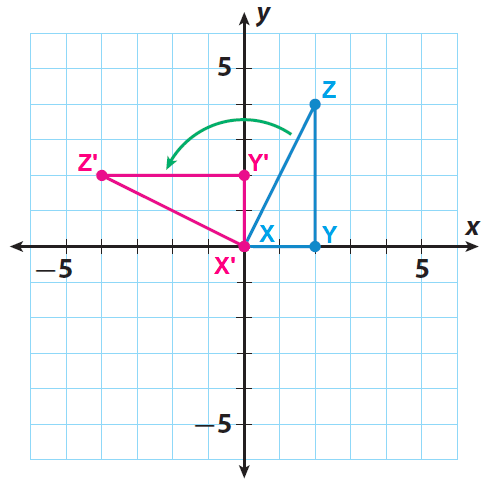
Rotating a segment \(180^\circ\) around a point that is not on the original line segment produces a parallel segment the same length as the original.

Three important ideas that emerge in the discussion are:

When there is a disagreement, have students discuss possible reasons for the differences. Ask the class if they agree or disagree with each response. Rotate segment \(CD\) 180 degrees around its midpoint, \(G.\) What is the image of \(C\)?Īsk students why it is not necessary to specify the direction of a 180 degree rotation (because a 180 degree clockwise rotation around point \(P\) has the same effect as a 180 degree counterclockwise rotation around \(P\)). Draw its image and label the image of \(C\) as \(B\) and the image of \(D\) as \(F\). Rotate segment \(CD\) 180 degrees around point \(E\). Draw its image and label the image of \(C\) as \(A.\) Rotate segment \(CD\) 180 degrees around point \(D\). The coordinates of point \(E\) are \(E\)(5 comma 5). Tell them that they will investigate this further in the next lesson.ĭescription: Point \(E\) and line segment \(\overline\) are: \(C\)(2 comma 2), \(G\)(4 comma 3) and \(D\)(6 comma 4). Some students may say that they “look parallel” while others might try to reason using the structure of the grid. Watch for how students explain that the \(180^\circ\) rotation of segment \(CD\) in the second part of the question is parallel to \(CD\).

When the center of rotation is an endpoint, the segment together with its image form a segment twice as long as the original.Īs students look to make general statements about what happens when a line segment is rotated \(180^\circ\) they engage in MP8. They are experimenting with a particular line segment but the conclusions that they make, especially in the last problem, are for any line segment.When the center of rotation is the midpoint, the rotated segment is the same segment as the original, except the vertices are switched.In general, rotating a segment \(180^\circ\) produces a parallel segment the same length as the original. This activity also treats two special cases: The purpose of this activity is to allow students to explore special cases of rotating a line segment \(180^\circ\).


 0 kommentar(er)
0 kommentar(er)
